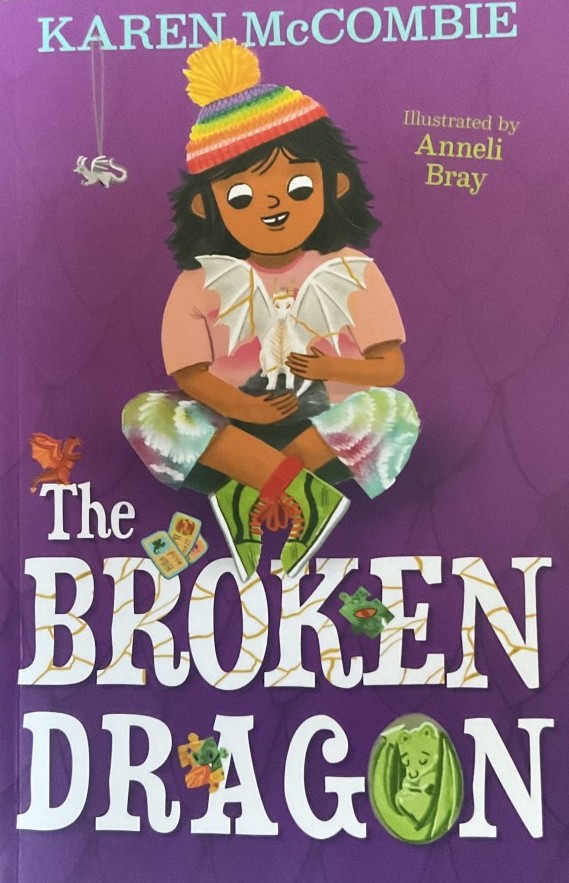Inspiring Young Readers
 posted on 29 Jan 2023
posted on 29 Jan 2023
The Broken Dragon by Karen McCombie, illustrated by Anneli Bray
No matter how old one is, starting at a new school is always stressful. Will the daily routine be very different? How easy will it be to find the way around the building? Will the teachers be friendly and kind? And most importantly, will the other pupils be welcoming?
Tyra is nearly ten and is particularly nervous because she has recently moved to live with her nan, so is already having to make significant life adjustments. She has a big outgoing personality described by herself as ‘loud and bouncy’ that would hopefully help her to be confident, but things don’t go that well at first. She also knows that her dress style and behaviour are somewhat unconventional and that other children find her ‘weird’.
She and her nan are invited by the mother of a classmate to a birthday picnic in the park which is a promising end to her first day at the new school, but everything suddenly starts to go badly and Tyra has stopped feeling ‘bright and shiny inside.’ I thought that this was a vivid way to explain the dramatic change in emotional balance that some neuro- diverse children experience.
Once back home, nan gives her a beautiful white china dragon gift to celebrate her first day at school and she is happy again. She decides to take Snowy the Snow Dragon with her to impress her new classmates the following day. The book title hints at what is going to happen next and poor Tyra has to cope with another difficult situation. I am pleased to let you know that her teacher, Mrs Suzuki finds a way to resolve things and also lets her know that snow dragons are very special in Japanese culture. She renames the dragon Okami and the teacher shows the children how the dragon can be carefully mended using Kintsugi, whereby broken pieces of china are glued together with gold. As all creative teachers know, an unplanned event can be used to excite and enthuse children, especially if it involves solving a pressing problem. So by using gold paint and glue the object becomes even more precious than it was originally and as the enthusiastic children chant ‘KINTSUGI’ Tyra feels encouraged:
‘As the fun new word bounces around the classroom, it feels as if all the upset of the morning is being mended’.
There is lots to talk about after finishing this book which I hope will help children to understand individual differences. More inclusive mainstream classrooms mean that many children with ‘weird’ characteristics are made to feel welcome as well as contributing to the rich diversity of the school community. Did this fictional school do enough to ensure that the new girl would feel welcome and could they have done things differently?
But there are other important messages in this book that are thought provoking. Tyra has a very close relationship with her nan and they clearly enjoy one another’s company. They are tuned into one another in a way that is very precious. One of their favourite pastimes is looking out for bargain treasures in charity shops and trying to build up her growing collection of any dragon related items. Tyra’s passion for collecting is one that I recognise, and will be familiar to many children. Lastly, the idea that broken objects can be carefully repaired and made even more special as a result is a way into conversations about ancient artefacts, valuing treasured family possessions, recycling and much more.
The engaging black and white illustrations scattered throughout the book add to the atmosphere of the story and show Tyra and her nan loving their time together as well as her new friends learning to roar with enthusiasm in the same way.
This multi layered story aimed at readers aged 7 and above is another treat from Barrington Stoke Publishing which aims to make short top- quality novels accessible to all children ‘as a quick engaging win for confident readers and a satisfying achievement for those who have to work harder.’
Strongly recommended
Karen Argent
January 2023